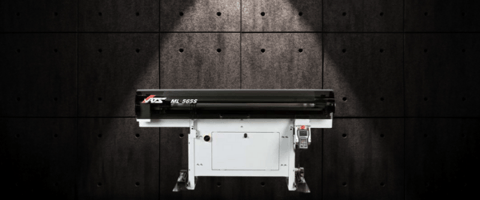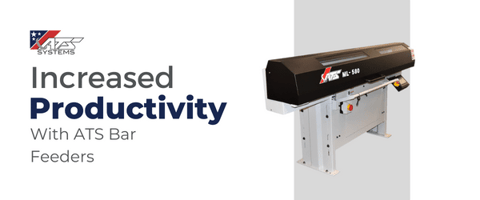Automation has vastly increased productivity in the workplace. Automatic bar feeders, sometimes...
Benefits of a Bar Feeder on a CNC Lathe
A bar feeder, also known as a bar feed, is a piece of auxiliary supporting tool that enables bar stock to be automatically placed in the CNC Lathe machine, resulting in increased productivity.
According to Statista.com, due to the coronavirus pandemic, the global manufacturing value of machine tools was $66.3 billion in 2020. The increasing adoption of bar feeder machines has undoubtedly increased the effectiveness of manufacturing operations by increasing their output rate.
Below are six ways in which bar feeders benefit manufacturing companies globally, thus enabling them to recover from the economic impact of the pandemic.
Increases Speed
Bar feeders allow the CNC turning machinery to run at maximum spindle speed with material bars by reducing the spindle speed automatically using the machine control's override function.
Users can adjust the vibration sensitivity's upper and lower limits on the bar feeder's control panel and monitor the intervals, among other settings.
It's a Good Fit
One of the most significant benefits of a bar feeder is its adaptability, especially when a liner is present. Spindle liners help to compensate for considerable variances in bar stock and spindle diameters.
Boost Efficiency
A bar feeder also reduces human interference, hence boosting the efficiency of the operation. It is especially true during lights-out operations, and it is the key reason they are so popular.
Minimizing the Change-over Times
The bar feeder also turns over for the next task relatively fast, eliminating the idle setup time on the CNC Lathe machine, which adds to its suitability for short-run operation.
Increases Productivity
Modern bar feed machines can also be loaded with stock and then left unattended for the entire shift or more, allowing a CNC turning unit to function automatically, hence allowing operators to work on other activities, which increases the company's overall productivity.
Simplifies the Use of CNC Lathe Machine
Setup and operation are simplified by seamlessly integrating the bar feeder with the CNC. Operators can easily access the machine's CNC setup page, which prompts users for part length, preliminary push length, tool offsets, and minimum clamping length before selecting the required program.
Summary
Since bar feeder machines exist in several types and sizes, it's good to assess the different models concerning your production needs to find the ideal fit to enhance your output.
.png)



